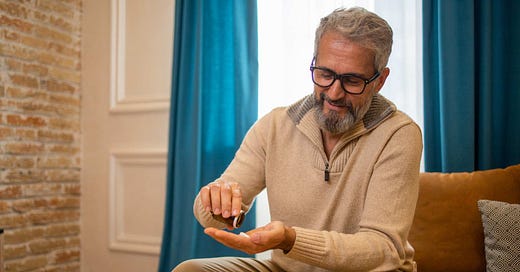For as long as I can remember, I’ve been hearing about the problem of antibiotic resistance. According to the CDC, “More than 2.8 million antimicrobial-resistant infections occur in the U.S. each year, and more than 35,000 people die as a result.” It’s such a big issue that in 2014, the government established a Federal Task Force for Combating Antibiotic-Resistant Bacteria. However, despite all of the resources we’re pouring into this National Action Plan, there’s still a really long way to go.
One of the main factors that contributes to the problem of antibiotic resistance is that unfortunately, a lot of people don’t take antibiotics how they’re supposed to. When people’s symptoms improve, they often stop taking their medication. Some people forget. Others figure that since they’re feeling better, they probably don’t need the antibiotics anymore. However, just because their symptoms disappeared doesn’t mean that all of the bacteria has disappeared.
When people don’t finish their full course of antibiotics, this can lead to more strains of antibiotic-resistant bacteria, which ultimately makes infections more difficult to treat. But what if there is a way to fix this? Imagine a world where nearly every patient who is prescribed a course of antibiotics completes the full course.
In a TED talk, advertising executive Rory Sutherland proposes a solution to accomplish just that. He says, “This is my suggestion for getting people to finish their course of antibiotics. Don't give them 24 white pills; give them 18 white pills and six blue ones and tell them to take the white pills first, and then take the blue ones. It's called ‘chunking.’ The likelihood that people will get to the end is much greater when there is a milestone somewhere in the middle.”
This idea is rooted in several psychological principles. Here are 3 of the main ones.
Chunking provides visible progress. Adding a milestone makes it easier for people to see how far they've come, and how much further they have to go. Having a tangible marker of progress can help improve motivation.
Chunking boosts confidence. Each milestone someone achieves subtly but powerfully reinforces the notion that the final goal is attainable.
Chunking sustains engagement. Reaching a milestone, or an intermediate “end point,” provides a sense of progress and keeps people engaged.
Thanks to human psychology, by breaking up a bigger goal (like finishing a course of antibiotics) into smaller chunks (like finishing the white pills and then the blue pills), we can significantly improve the chances that people will complete the task.
However, there are a lot of hurdles that would need to be overcome in order to test this approach. For good reason, the appearance of medications is regulated, and antibiotics already come in specific shapes and colors. Taking into account factors like manufacturing, regulatory approval, and cost considerations, changing the appearance of antibiotics isn’t the easiest endeavor. Nevertheless, it could be worth it.




